Whether you’re responsible for one or one thousand vehicles, day-to-day fleet management involves jumping hurdles – from keeping costs down and customers happy, to staying on top of ever-changing regulatory laws and safety. Our recent benchmark survey revealed transport professionals are overwhelmingly turning to technology to make life easier.
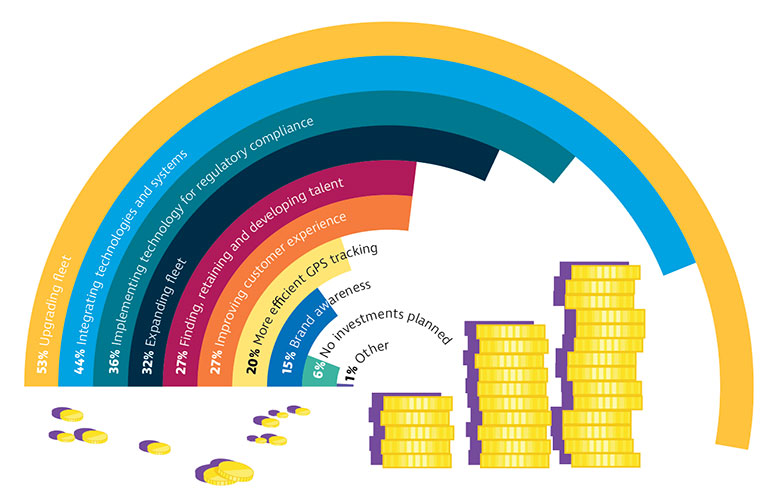
Hardware and electronic solutions dominate the list of planned investments this year. Almost two-thirds are considering fatigue monitoring, and 88 per cent are already using telematics (or will within the next year). A shift to digital technologies is vital as a drive towards efficiency and productivity heats up, yet why is telematics proving such a game-changer?
Here are six benefits transport professionals are seeing as a result of implementing the technology.
Peace of mind
When it comes to the business benefits of fleet management solutions, knowing exactly where vehicles are tops the list. More than half of survey respondents said peace of mind was the biggest advantage.
![]()
With a view of your assets at any given time, you can be confident that they’re being used efficiently and according to company policy. This data also allows you to accurately respond to customer enquiries, effectively schedule jobs and cut down on unauthorised vehicle use.
Compliance
Managing regulatory compliance is an ongoing challenge for transport businesses, with 70 per cent of survey respondents particularly concerned about fatigue management.
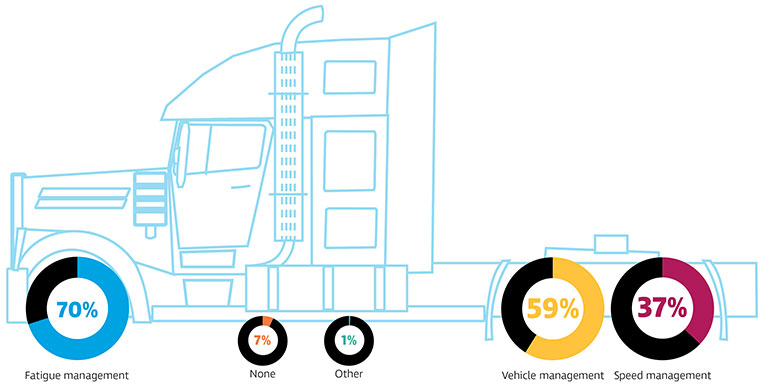
A telematics solution not only captures accurate data but makes compliance a simpler task by automating manual processes like work diaries or mass management checks. By switching to an electronic system, you no longer need to hunt for lost paperwork or trawl through stacks of paperwork to complete an audit.
Happier customers
Telematics is often implemented as a productivity measure, but this extends to better service for your customers.
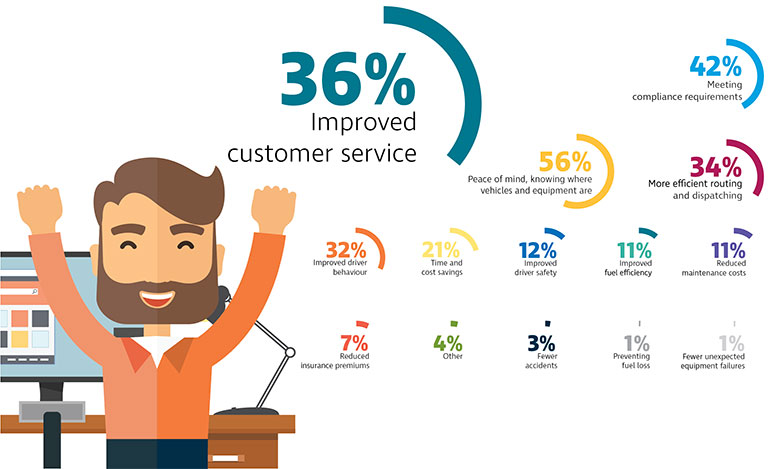
Having access to vehicle data lets you manage workflows, respond to requests quickly and optimise routes to spend less time on the road and where it matters the most - your customers. With the time you save, you can extend ordering windows or cut-off times to meet customer demand. Sharing route data with customers to keep them in the loop with an expected delivery or arrival time will also separate you from the competition. The happier your customers are, the more likely they’ll spread the word about your business.
Optimised routes
More than a third of transport professionals say that telematics allows for more efficient routing and dispatching.
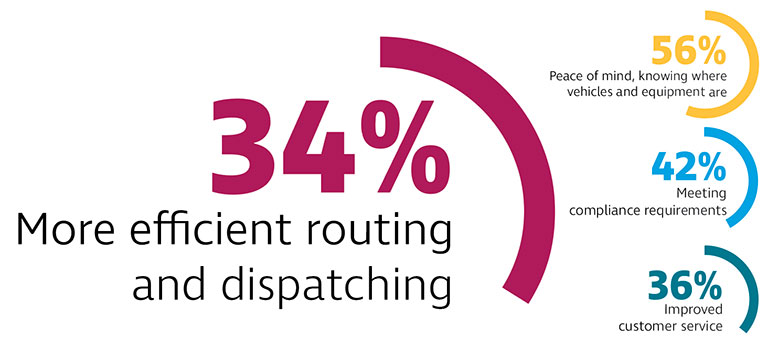
The visibility provided by a fleet management system means you can pull live data on traffic congestion and weather along with complex scheduling requirements to work out the most efficient route for each job. This lets you put all your vehicles to good use and may even help you identify an opportunity to operate fewer trucks or take on more jobs.
Safer driving
Encouraging drivers to act safely regardless of telematics is a necessity in today’s modern environment, but with accurate data on driver behaviour you can start to enforce safer habits.
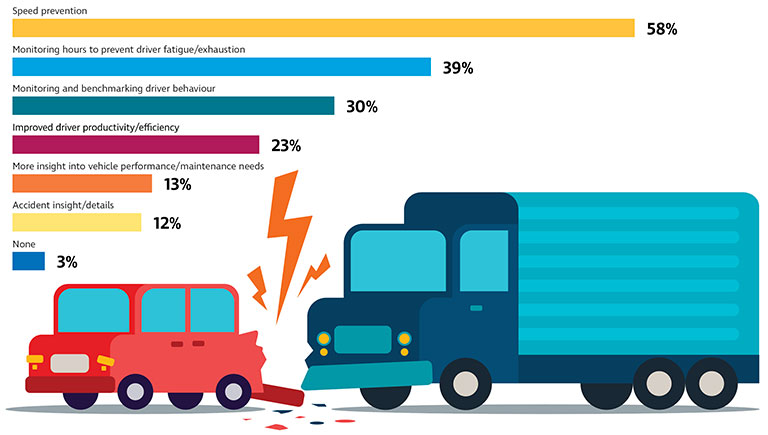
Monitor risks like speeding and harsh cornering or braking to identify repeat offenders and implement training to help them drive more carefully. You can also set up in-cabin alerts that will address unsafe driving immediately, like a notification when a driver is travelling over the speed limit or needs to take a rest break.
Time and cost savings
Ultimately all these benefits add up to less time and money spent on unnecessary manual tasks, fuel wastage or vehicle maintenance. Given the fact that managing costs was the top business challenge for 51 per cent of our survey respondents, this is a serious competitive advantage. Telematics provides historical reporting as well as live data, so you can identify trends that are costing your business and begin to reverse engineer them to have minimal or no impact. This helps with more accurate forecasting and planning for vehicle utilisation amongst your fleet.
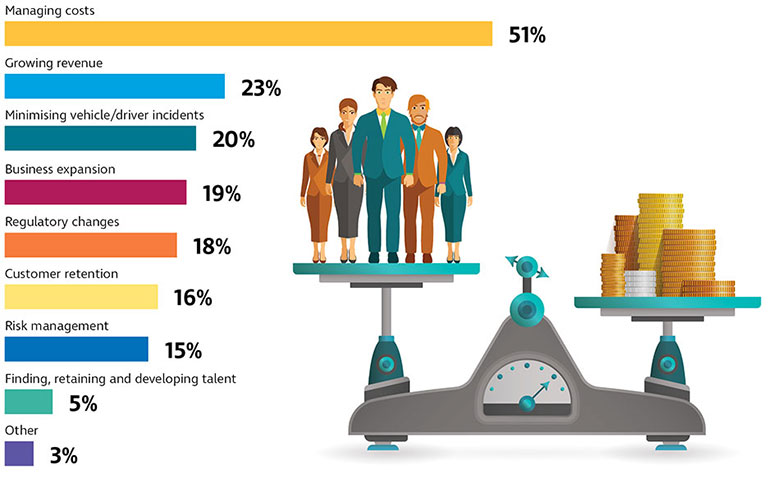
While financial pressures and compliance are major concerts, our benchmark survey revealed that technology is helping to tackle all the major issues for transport businesses – from traffic congestion and fatigue management to finding opportunities for revenue growth.
Traditionally, Telematics was implemented for ‘dot-on-the-map’ tracking to help get the job done, but today’s businesses are taking advantage of it to reap benefits across the entire organisation. As technology becomes even more of a mainstay in business, it will become increasingly useful for forward-thinking strategies that help you stay ahead of the curve.

